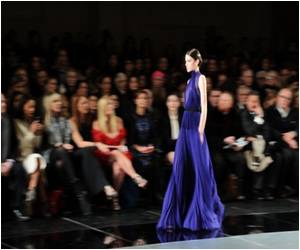Paris will be hosting a landmark exhibition on Saturday.

The story begins with an 1895 high-necked tea dress in green velvet and silk by the man considered the father of haute couture, Briton Charles Frederick Worth.
Worth, from Lincolnshire in eastern England, opened for business in central Paris in 1858 at 7, Rue de la Paix; others followed and by 1911 the Paris Haute Couture Association had been formed.
At an exhibition of decorative arts held in the French capital in 1925, 75 couture houses were represented.
Highlights from the 1920s and 1930s include Jeanne Lanvin's 1929 black taffeta "Bel Oiseau" (Beautiful bird) dress and a 1932 ivory silk robe by Madeleine Vionnet so timeless it could have been made yesterday.
By 1930, economic circumstances forced a contraction with collections slimmed down from a staggering 400 designs to 100, according to exhibition curator Olivier Saillard, director of Paris's Galliera fashion museum.
Advertisement
Nevertheless, in 1935, Chanel alone was employing 4,000 workers to make 28,000 pieces a year.
Advertisement
In 1947, Christian Dior opened his own couture house, followed in 1952 by Hubert de Givenchy and Pierre Cardin. By 1953, there were some 59 couture houses.
For Saillard, the 1930s were the stylistic "golden age" of haute couture for which Paris is famed, along with the 1950s.
Among the creations representing this charmed fashion decade is "Palmyre", a strapless Christian Dior embroidered evening dress.
"All designers go back to the 1950s, fashion has not really changed," said Saillard.
In 1961, Yves Saint Laurent founded his own fashion house and presented his first collection the following year.
By 1973, however, the number of houses was down to 25, employing 3,120 people, and by 1990 that figure was a mere 928.
Today around 20 houses are involved in haute couture, organising shows twice yearly in January and July, with about a dozen of those belonging to the haute couture association and able to meet its strict criteria such as the amount of work done in house by hand.
The entire industry is based on an estimated several hundred customers worldwide, although designers report that numbers are rising due to new customers from newly-rich parts of the world such as China, Russia and Brazil.
The exhibition brings the Paris couture story into the modern era with a figure-hugging beige lycra dress by Alaia from 1990 and a 2008 purple satin ball gown by John Galliano for Christian Dior.
Visitors can judge for themselves how sustainable couture is in the 21st century, but Saillard says he finds it reassuring that "there are not only houses such as Dior and Chanel but also (Jean Paul) Gaultier where younger people work in this heritage craft and which try to safeguard the skills".
Meanwhile, the number of people employed in the wider fashion world is today estimated at 60,000 in Paris alone.
"Paris Haute Couture" runs until July 6 at the capital's Hotel de Ville. Admission is free.
Source-AFP









